‘Around William Woodley’s Apiary, Worlds End, Beedon’ is an update of a blog post I did in 2014. The purpose of the post was to review the features in the photo (see above) and to discover what remains today.
Back in 2014, I had just discovered the above photo in the British Bee Journal via the website archive.org. This discovery started a grand project to uncover the story of William Woodley’s life.
Back in the day, Mr Woodley’s home was called the ‘The Apiary.’ Today, the house is called ‘Garden Cottage’ and I speculate that the name changed in 1931; this was the year Mr Woodley’s daughter sold the cottage.
The 1892 Photograph
I numbered the features in the photograph with numbers and I refer to the numbers in this blog.
The Road Frontage of the Apiary, Worlds End, Beedon
View of Garden Cottage (white cottage with tiled frontage) this was William Woodley’s home.
The 1892 photograph was taken at the rear of Mr Woodley’s home, which was a working apiary. The photo above is the current street-view (the front of his home), and the white house is ‘Garden Cottage’.
There are dwellings either side of Garden Cottage. These houses sit on land which would have been part of the curtilage of Mr Woodley’s home.
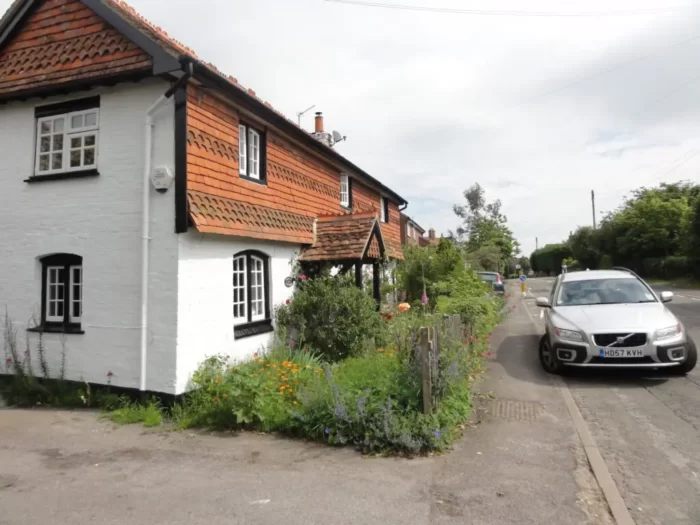
The photo above is a closer view of Garden Cottage. The previous owners of the extended the cottage, and yet it retains its historic charm.
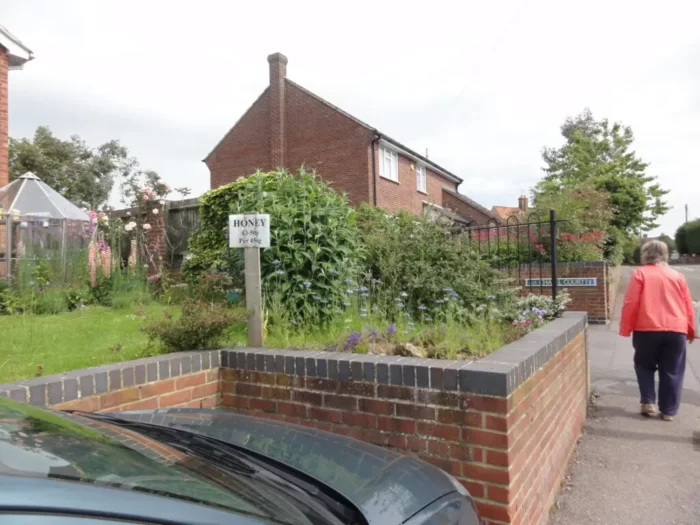
Moving northward, the adjacent dwelling is High House. Interestingly, the sign in the front garden is for honey, and I understand that the honey for sale comes from Compton.
Feature 1 – The Wesleyan Chapel
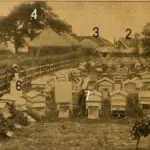
I struck-up a conversation with the lady in the salmon-coloured coat in the photo above, and she led me to the Chapel inscription stone.
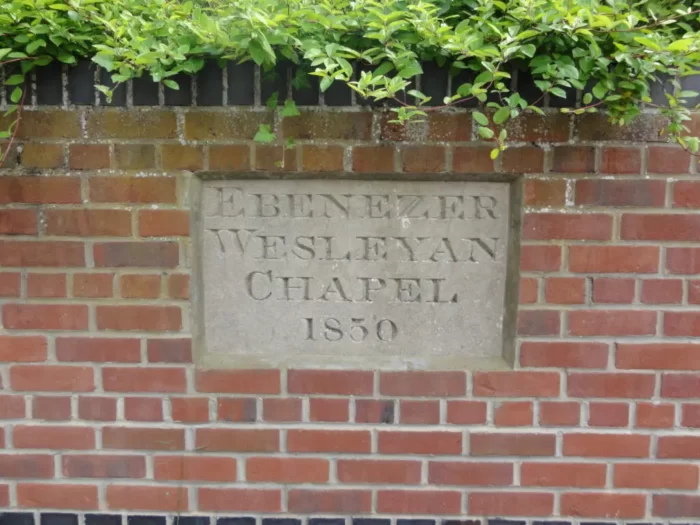
There is an access road which abuts High House, and serves a group of dwellings called Chapel Court. There is a wall running along the north-side of this access road and built within this wall is the Chapel’s inscription stone.
Mentioned in an 1897 article from the British Bee Journal:
The portion of a building on the right is a Wesleyan chapel, but Mr. W. and family regularly attend Beedon Church…
The Wesleyan Church had circuit preachers who would go from Chapel to Chapel, spreading the word of God. One such preacher parked his Gospel Car outside Worlds End Farmhouse.
Beekeeping associations copied this method of spreading the word, and a trained beekeeper would traverse villages and towns, giving talks on modern beekeeping.
The Decline of Worlds End Wesleyan Chapel
During second half of the twentieth century, the story of the chapel is one of decline. The congregation of the Chapel grew smaller and the building was deteriorating.
The Chapel Council discoverd the roof needed a significant repair. In 1978 they decided to suspend services at the Chapel. The cost of repairing the roof would be over £1000 and the small congregation could not fund the repairs to the roof. The Chapel sold for £6000 and demolished several years later.
Victor Pocock rescued the inscription stone and the stone sat in Victor’s garage for two-decades.
The site of the Chapel served as an access track to modern barns (more about this barn and feature 5 below)
In the early 2000’s, redevelopment took place behind the site of the site of the old Chapel, which is feature 5 (hayricks). As part of this redevelopment, the developers built the inscription stone into a retaining wall.
Feature 2 – Worlds End Farmhouse

From Chapel Close, follow the Oxford Road north for 30 metres and you will come to Worlds End Farmhouse.
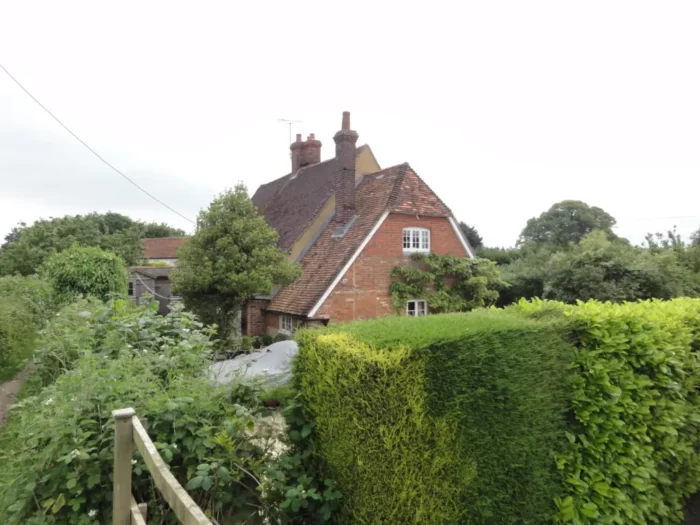
Feature 3 – Barn at Worlds End Farm

The barn, feature 3 in the 1892 photograph, which was adjacent to the Farmhouse, is no longer there (see photo below). Strictly speaking, it was a pair of barns, and I should refer to them in the plural. The developer demolished them and housing took in their place. The housing has a suburban character, and feels incongruent with the setting of the nearby Worlds End Farmhouse.
Feature 4 – Trees

There is a footpath to the north of Worlds End Farmhouse which follows the boundary along World End Farmhouse and Chapel Court. The footpath goes to Beedon Common. Beyond the trees would have been the hayricks (feature 5).
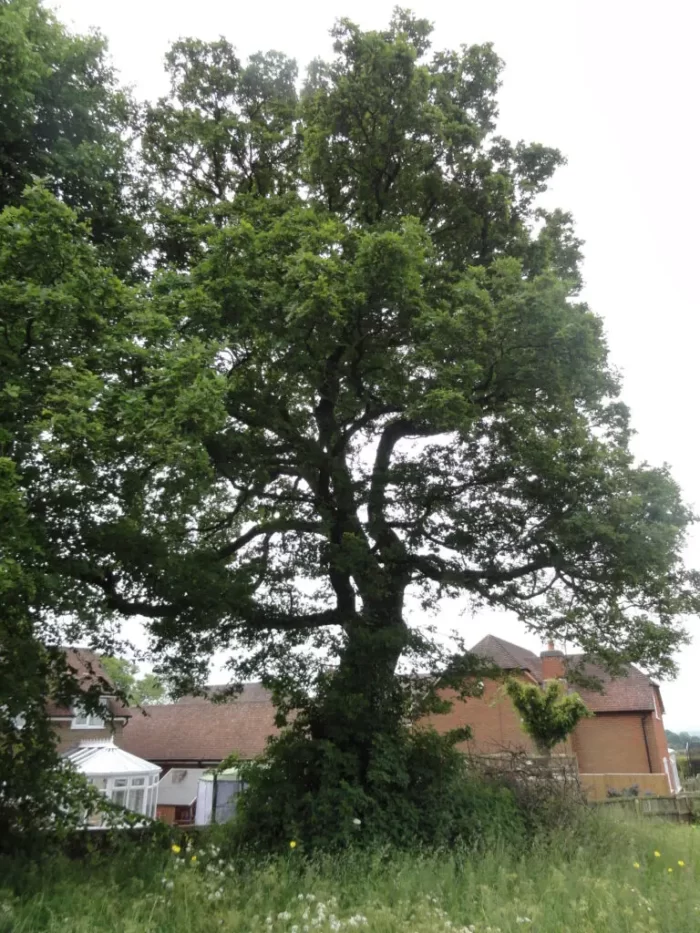
I believe the two large trees you can see (one is an oak) were present in the 1892 photograph see 4. What do you think?
Feature 5 – Hayricks/Rickyard

Feature 5 is the rickyard and is the place where hayricks were constructed. The rickyard would have been located on what is now Chapel Court.
The local farmer built two modern barns on the site of the hayricks, and I speculate this happened in the early 1980’s. In the photo below, you can glimpse the barn in the background, located between the two houses.
The photo below shows the modern barn. The modern barn superceded the hayricks and yet served the same purpose.
The modern barns burnt down and Chapel View sits in its place.
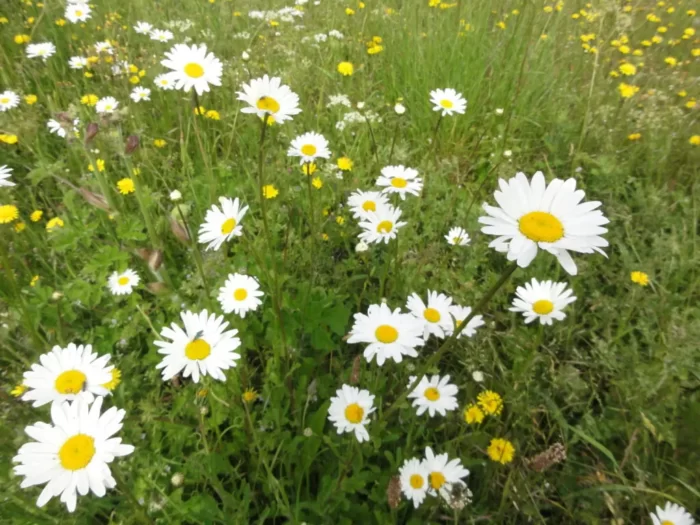
These Ox-Eye daisies were some of the wild flowers growing along the footpath. In Mr Woodley’s day, wild flowers were common. We know this because he wrote about the local flowers in his journal.
The cause of the profusion of wild flowers was traditional farming practises. The Ox-Eye daisies were perhaps a small glimpse of the quality and diversity of flora Mr Woodley’s honeybees would have foraged on.
Features 6 and 7 – Mr and Mrs Woodley

Last but not least, Mr Woodley and his wife Annie. Recently, I wrote an introductory piece about William Woodley and you can read it here. I hope to write about William and Annie in the future.
Conclusion
Sadly, many of the beautiful features in the photo of Mr & Mrs Woodley’s apiary are gone. Change is inevitable, yet I see a loss beauty in this corner of Worlds End. The new buidlings appear joyless and out of character with the nearby traditional rural houses.
As consolation, I give you this website which I hope you enjoy.
You might be interesting in reading the introductary piece on Mr Woodley <here> and also the story about his car <here>.



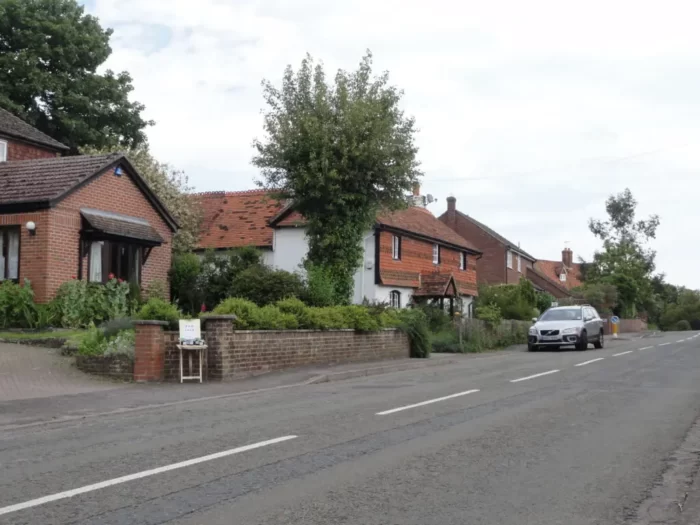
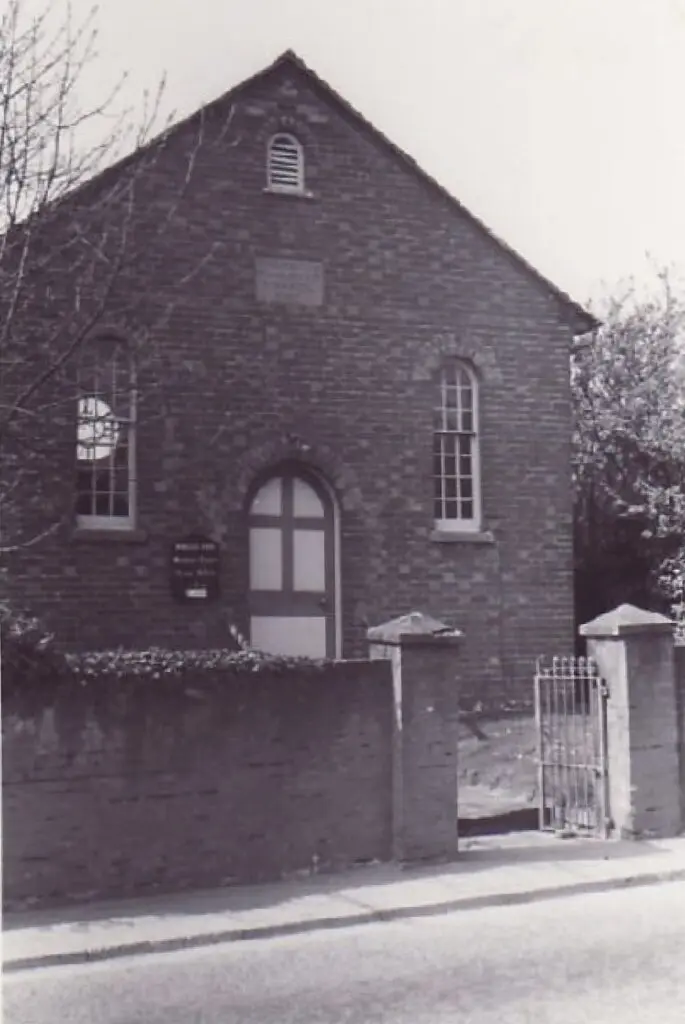
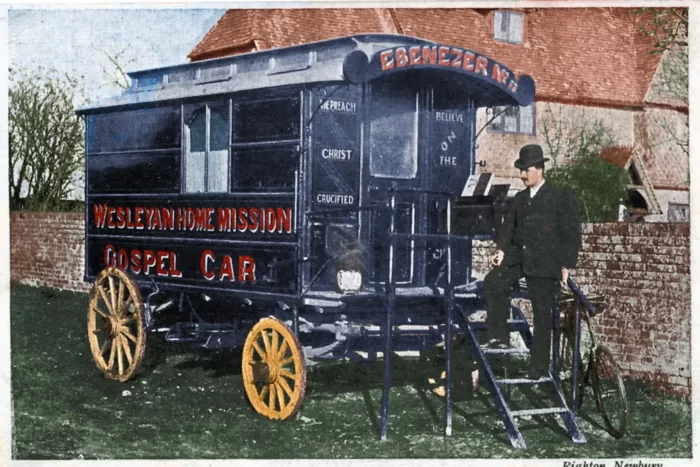
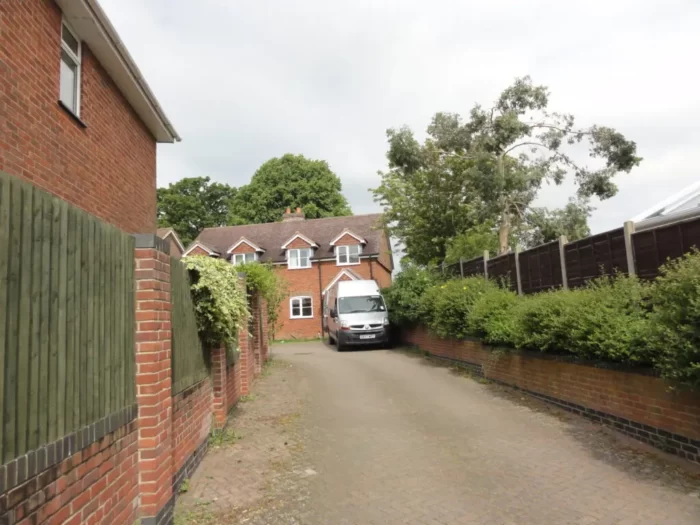

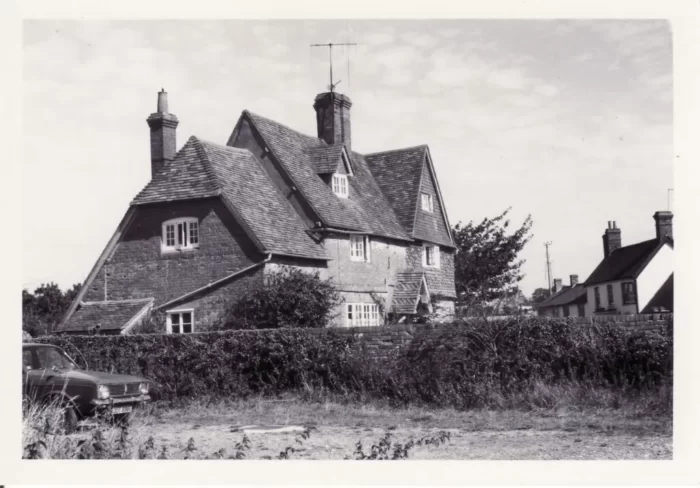
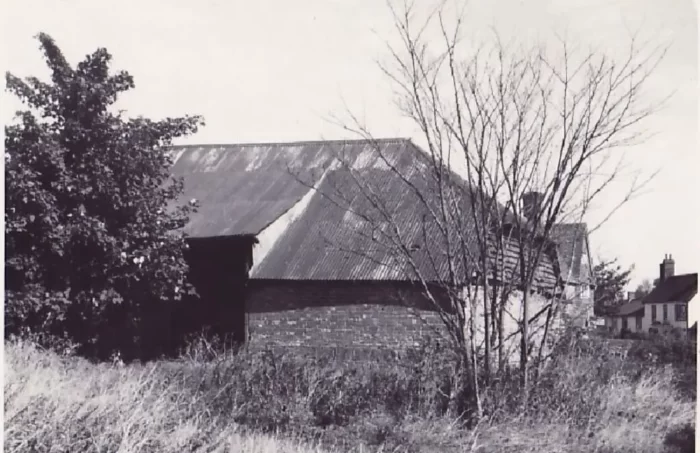

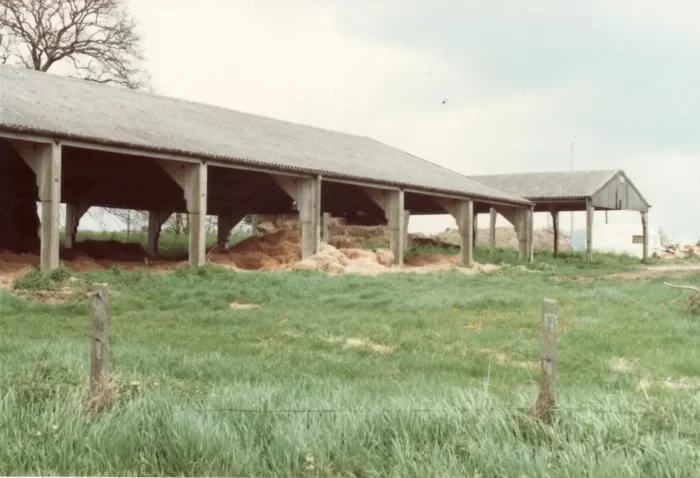
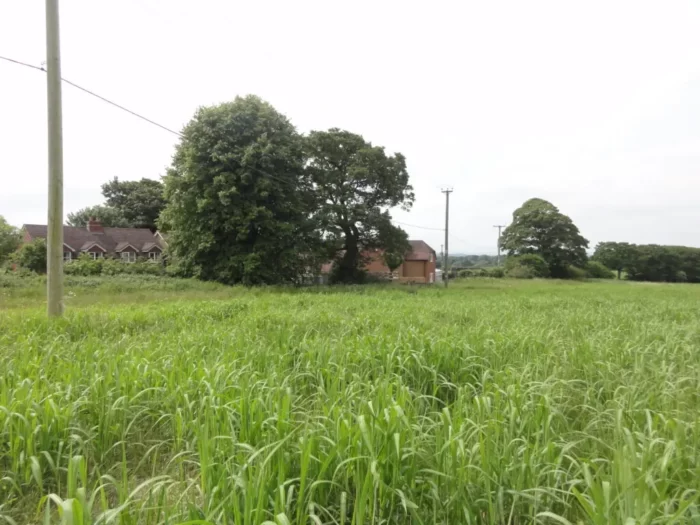

hello I have just looked at the meaning of beedon
which I have always wondered about, as we, my family and I lived at Worlds End in the seventies,my husband,two daughters and son who was ill with a life threatening disease that he had all his life and further on along the line the coronavirus came along and is no more sadly……….. I intend to be a frequent visitor to this site from now on I am glad to have found it
Thanks for your comments, they mean a lot to me.